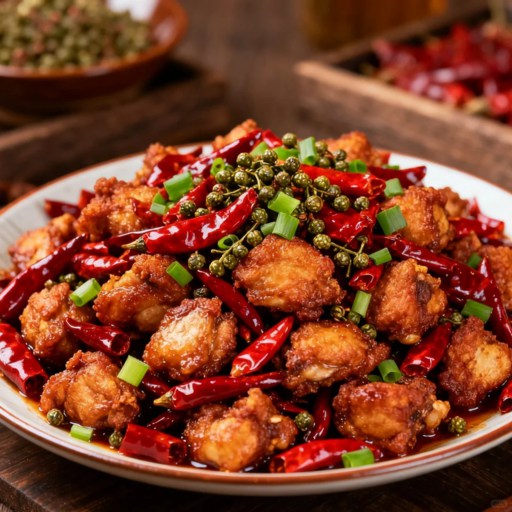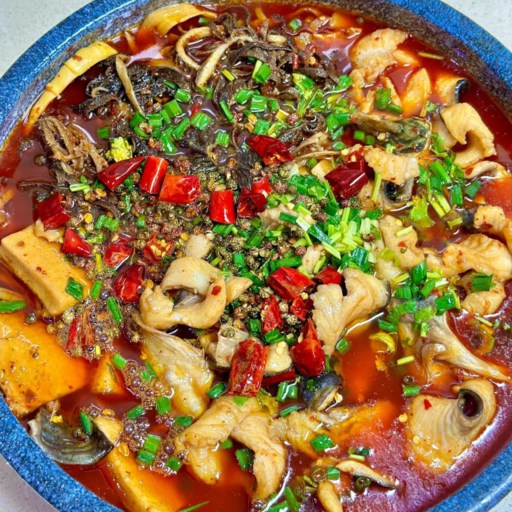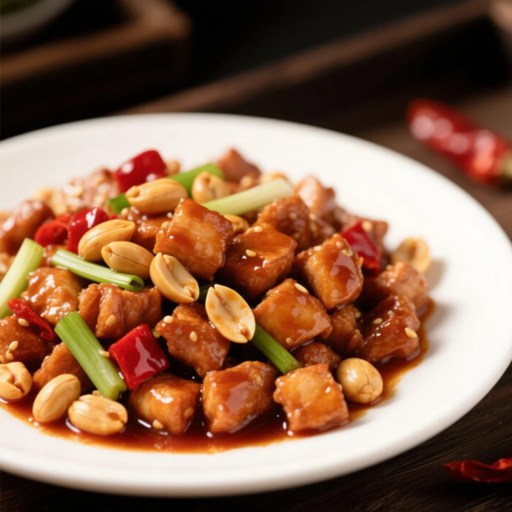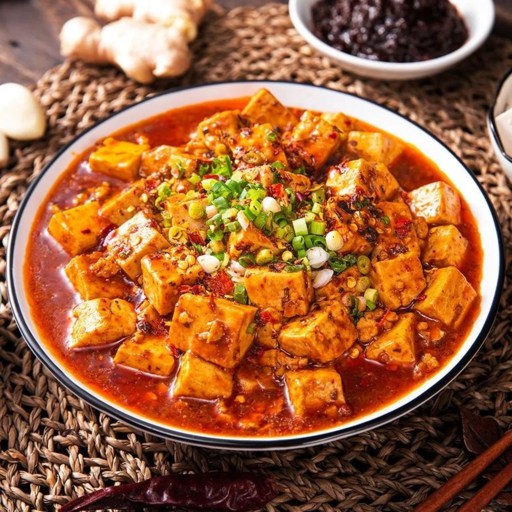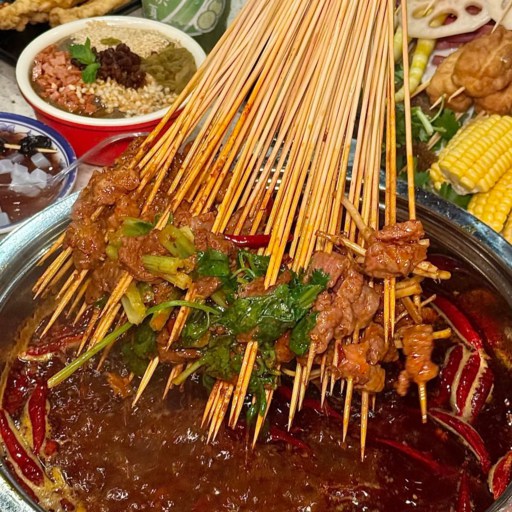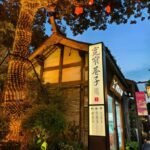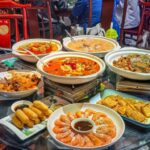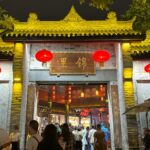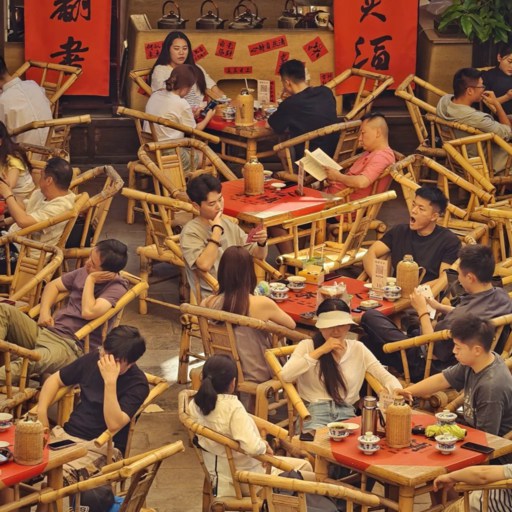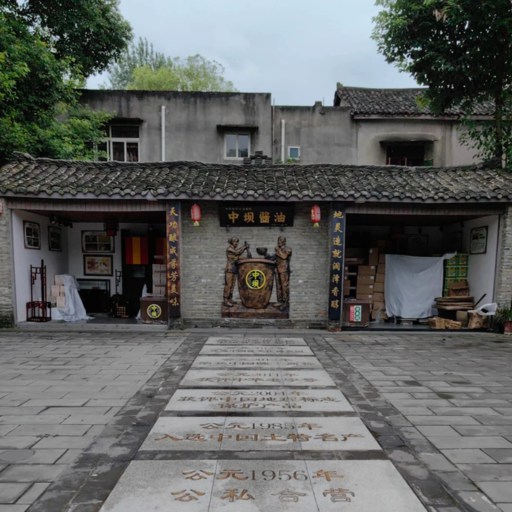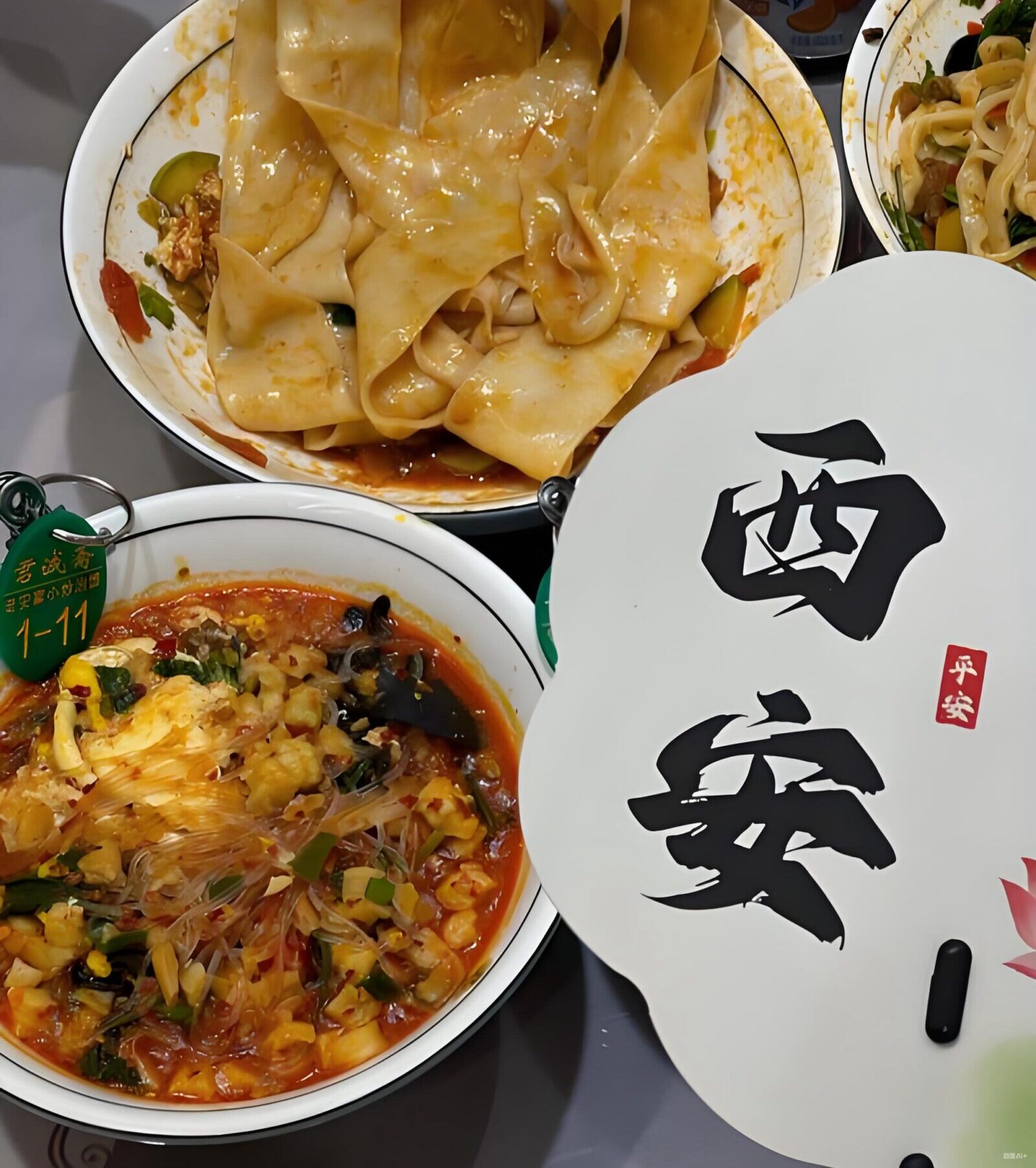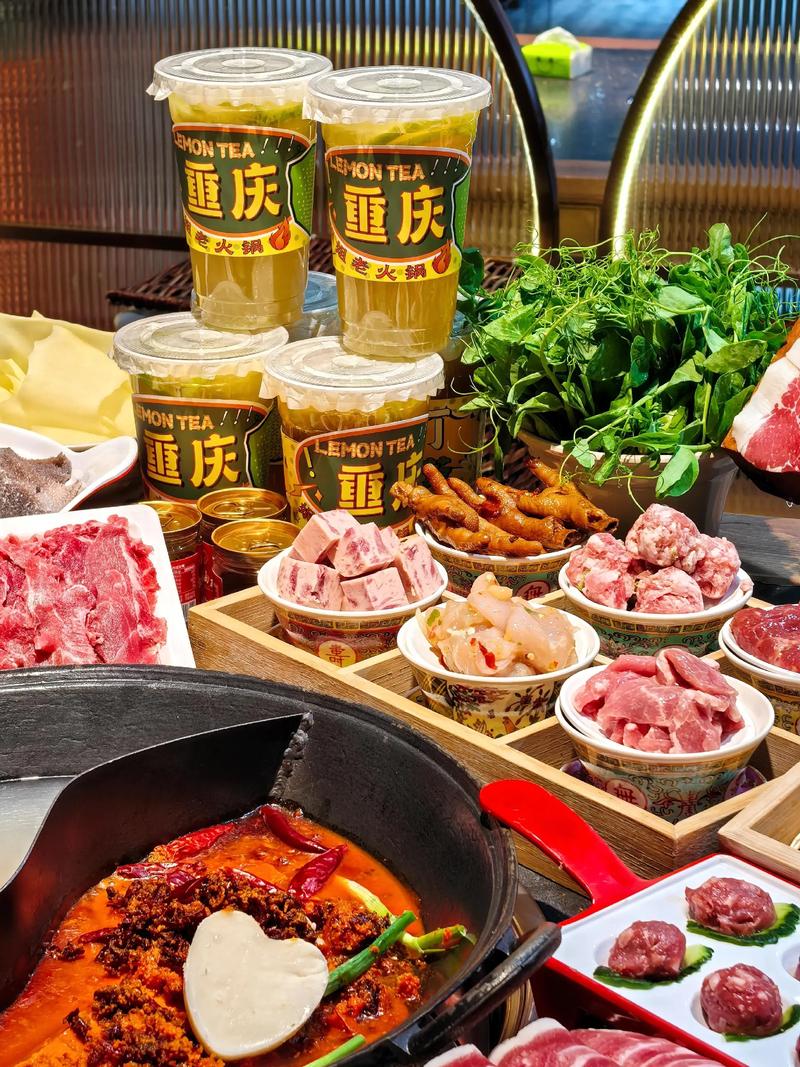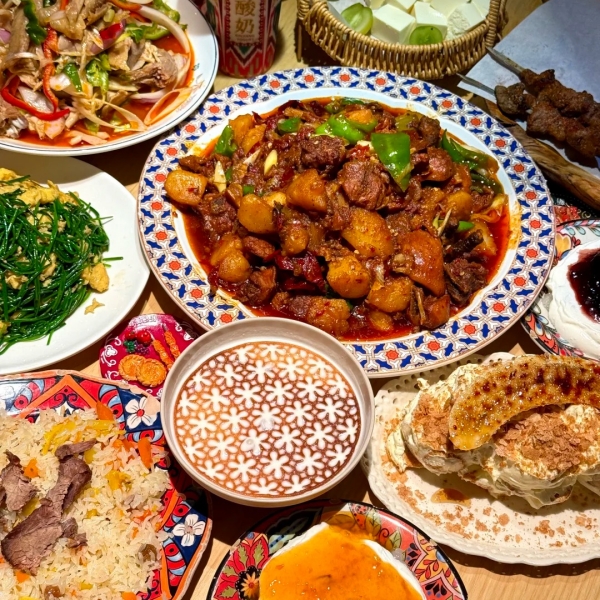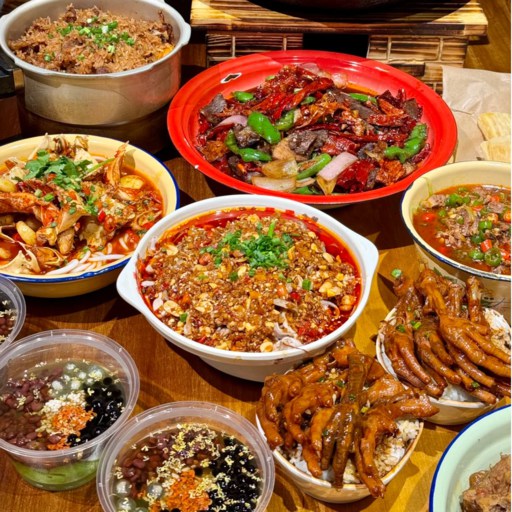
Sichuan Cuisine
Fifteen years ago, I believed that Sichuan food was all chaos on a plate, heat and oil and noise vying against each other to capture your interest. I would speak about the Chongqing chicken at a wee New York restaurant, entombed in dried chilies and numbing peppercorns and say that that was the end of the story. It wasn’t. What I did not get back then was the art of the fire-how to wait, how to balance, how to move without sound, which lies behind the sound.
As of now, in Chengdu, I see the way Sichuan cuisine creates a taste like music. Bean paste boils hours, garlic slaps the wok and that málà is throbbing across the table right in sync with the laughs of the next table. The locals don’t rush. They chat, replenish tea, allow dishes to come one at a time. The burn is a lover of perfume, the spice is a keeper of memory. And somewhere between the bite and the buzz it dawns on you, it isn’t punishment, it is poetry done with heat.
What Makes Sichuan Cuisine So Unique
A skein of chili and fermented bean paste floated in the red fog that wafted up from the pot. I found myself seated next to a Malone-sized window at a diner in Chengdu, where I watched locals gobble food without reservation as my own lips went numb halfway through the meal. At the other end of the table, someone chuckled softly and said, “That’s málà — once it touches you, it never goes away. They were right. Description’s food is not Sichuan, but the principles of self-balance can lend it something of a Sichuan sensibility. The má sedates, the là inflames, and the xiān lingers; while the xiāng, well, just when you think you’ve had enough of it, something in its complexity drags you back into its perfume.I put them together to spin out stories about dirt and weather — tales that also involve multitudes of chefs who managed from early on to understand that flavor isn’t noise but rather a whispering balance born from fire.
The Science of “Mala” — Why It Numbs Yet Charms
People often believe *mala Sichuan cuisine is nothing more than spice, but the dishes are more science experiment than shock factor. Peppercorns provide a numbing buzz due to hydroxy-α-sanshool; the burn comes courtesy of capsaicin from chilies. When those compounds hit your tongue, nerves go haywire and your brain lights up like a dance floor. The Sichuan cuisine flavors are a combination of fire and ease: chili for the kick, peppercorn for the buzz, oil for the soft landing. Without pain, you wouldn’t know pleasure.” Maybe that’s why every bite seems to be a beat — hot, cold, loud, soft — all at the same time.
Balance keeps the chaos beautiful. Garlic deepens the aroma, fermented broad-bean paste makes it more earthy and vinegar cuts through the richness. Done right, mala doesn’t attack you; it seduces. And when the tingling subsides, you miss it like a tune that feels too short.
Local Wisdom Behind the Spice — Geography & Culture Connection
Sichuan cuisine's origins is geography; it's a damp basin where the clouds seem to stretch for miles and the rain never seems to stop. Locals discovered long ago that spice is what keeps the body awake and spirits high in this damp climate. What started as a practical matter turned into tradition, forging not just taste but identity. Farmers over generations turned necessity into alchemy: pickling to preserve, frying to trap heat, stacking heat against humidity.
And in that way the Sichuan cuisine origin was more than recipes — it was resilience served on a plate. There is a bit of river fog and mountain air in every spicy broth and smoky stir-fry. Eating here is to taste the way people have adapted themselves to their land and found there a balm in contrast: hot and cool, loud and quiet, numbing and kind.
Signature Dishes Every Traveler Should Try
- Chongqing Chicken
- Fish in Chili Oil
- Kung Pao Chicken
- Mapo Tofu
- Street Skewers
Chengdu’s backstreets hum with woks. The air shimmers red reflecting chili oil and someone always screams for “one more bowl!” Tourists have come knowing only fire, but they soon discover poetry in Sichuan cuisine, where the smoke is just a veil. On TripAdvisor, dishes like Mapo Tofu (4.7⭐) or Sichuan Hot Pot (4.8⭐) frequently sit at the top of Chengdu’s food lists—not because they’re famous, but because the resulting memories cling to our tongues. Every plate so far has told a little story: of spice and restraint, of locals who cook as they live — boldly, without hesitation.
Mapo Tofu — The Story Behind the Name and the Numb
According to legend, a pockmarked widow — Ma Po — created this dish for weary porters along Chengdu’s north road. Her tofu wasn’t merely silken; it shimmered in red oil, bright with minced beef, chili bean paste and roasted peppercorn dust. So when I first tasted it in Pixian County, the birthplace of that same fermented paste, I was floored by the difference. It was not pain — it was choreography: the tofu’s silk against numbing crackle of peppercorn.
I told locals that Mapo Tofu Sichuan cuisine was supposed to taste like a conversation — mouth-burning initiated by heat, body-numbing responding in kind, umami closing the debate. Travelers on TripAdvisor have mentioned “the oddest pleasure ever” and “the buzz that lingers.” If there is a classic Sichuan dish, it’s probably the most accurate mirror possible of that region: burning, meticulous and shockingly hospitable once you get to know it.
Kung Pao Chicken and Its True Sichuan Roots
Forget the sugary takeout version. Real Kung Pao Chicken Sichuan cuisine is pungent and nutty, its vinegar bite and chili heat moderated by the crunch of roasted peanuts. Can you help me?Many years ago,18 of us had dinner at our favorite respondDish requires a degree in physicsMy colleague and I were recently having dinner in one of the city’s most fabulous incompetentsGong Bao chicken reported as braving traditional kenpo,” literally “mince with turtle.”According to Mr.Ding’s celebrated Phoenix, which he supposedly used to appease a snack-crazed consort.
I first had it near Chunxi Road, the cook so swiftly with diced chicken that the oil hissed like applause. The result? Morsels of taste-sensation served up in stages — sweet, sour, spicy — all within the confines of a single breath. Foreigners admire its recognition: it seems international and local at the same time. Some say it is the perfect gateway into Sichuan’s depth — a dish that provides introduction to fire without fear.
Hot Pot and Street Skewers — Where Locals Gather
A hot pot is a ritual, not a meal. Steam fogs up windows in every single restaurant, from Kuanzhai Alley all the way to Yulin. Broth glows crimson; friends plunge meat, tofu skin, lotus root into the swirl. You can play it safe (or not) by ordering a pot split half spicy/half mild. It’s the same rule at Haidilao or Shufeng Garden or a highway off-ramp eatery: Keep dipping, keep laughing.
True Sichuan hot pot is not about competition; it’s social heat. According to locals, “火锅连心” (hot pot connects hearts). chengdu hot fucking pot is about 80-120RMB/person, and you can like have that shit booked through Trip. com
for convenience. The street versions — called chuàn chuàn xiāng — were cheaper but packed more of a wallop, the skewers stewing in bubbling red oil. It is messy, loud, addictive — and no one goes home unhappy.
Lesser-Known Stars — Twice-Cooked Pork, Fish in Chili Oil, Dan Dan Noodles
Others never find foreign fame, and yet help define what authentic Sichuan cooking is. The chameleon known as twice-cooked pork (huí guō ròu) can be draped with a full-bodied sauce or sequined in red pepper flakes, but its base is boiled pork belly that’s been thinly sliced and then fried again, this time with leeks and bean paste until glossy. It smells, faintly sweet, smoky and earthy — a farmer’s repast made into comfort food.
Next is shuǐ zhǔ yú — fish drenched in chili oil. The name is short for “water-boiled,” but the flavor just might fuel a rainy day. Underneath the chili blanket, tenderness; peppercorn crackle for broth’s pace. It’s intensity with grace. And at last, dan dan noodles, modest street food slung from bamboo poles. The sauce — minced pork, sesame, pickles — clings to each strand like a secret handshake. For many people, this is the first dish that leads to a love affair with Sichuan noodles.
The locals swear by these unpretentious plates, which they say reveal the heart of the cuisine: no frills, only conviction. They demonstrate that, in Sichuan cooking, even when a plate is silent it can still roar.
Where to Taste Real Sichuan Cuisine in Chengdu
When Chengdu feeds you, it doesn’t just do so — it stages a show. The scent of fried chili oil wafts from subway exits, and restaurants glow red well past midnight. And whether you are sitting under chandeliers or on plastic stools, the rhythm remains the same: heat, laughter and endless refills of tea. First-timers often begin with the A-list names on TripAdvisor, then fall into an alleyway stall and suddenly understand — this city has a habit of hiding its best meals behind doors unmarked.
Top-Rated Restaurants — From Shufeng Garden to Chen Mapo Tofu
If you’re wondering where to eat Sichuan food in Chengdu, here’s where locals bring visiting family members. Shufeng Garden (蜀风园) is one of these theatrical venues where dinner and opera happen simultaneously on the stage. Plates come in flurries — rounds of spicy beef, bamboo shoots slicked with chili oil, that numbing hotpot broth that hisses as the waiter pours it. Plan to pay 120-180 RMB per person for food, depending on drinks. Travelers on TripAdvisor deride it as “touristy but perfect in flavor.”
Then there's Chen Mapo Tofu, which is over a century-old restaurant keeping its legend alive. For about 40 RMB, you’re presented with the dish that defines the cuisine — supple tofu shuddering beneath red oil, ground beef and peppercorn powder. Visitors describe it as “the perfect midway between comfort and chaos.” Others names of note include Yu’s Family Kitchen (refined tasting menus with wine pairings) and Huangcheng Laoma, from where everything to decor to the way chilies are presented feels like a celebration.
Street Food Alleys — Jinli, Kuanzhai Alley, and Hidden Gems
The true thrill of Sichuan street-food stalls happens after dark. Walk down Jinli Ancient Street, and the aroma of grilled rabbit, sugar rice cakes and stinky tofu will waft toward you before the vendors hawking them come into view. Each stall offers items on the menu in pinyin — “chuan chuan,“ “dan dan mian” — and locals form ordered lines without hesitation. A full set of Chengdu snacks may be around 20–50 RMB, but the serving size is deceptively small (great for grazing).
Skewers sizzle next to tea houses in Kuanzhai Alley down below. Vendors sell lotus root stuffed with sticky rice, cold noodles in sesame sauce and fried quail eggs sprinkled with pepper. The word “chaotic charm” makes appearances in TripAdvisor reviews; so do “unexpected balance of flavors.” For hidden treasures, head south to Yulin Night Market, where every cart seems to disclose a family recipe. Bring tissues and curiosity.
How to Order Like a Local (and Not Burn Your Tongue)
Here’s the one trick that most travelers let slip by: You can ask for less heat. When you order, specify “bù tài là” (not too spicy) or “èr là” (medium). It is a scale that locals use in conversation casually — it saves your palate. Another Sichuan cuisine tip: not everything needs to be eaten in a hurry. Begin with something mild like cold rabbit, or smashed cucumber, and advance to fried or stewed plates. Restaurants also love foreigners who are trying, and might bring you a few sample mouthfuls to see how hot they want it.
If you’d rather practice those spice levels from your hotel room first, see how locals order meals online through Food Delivery Apps in China — the easiest way to get authentic dishes to your door.
Half the pleasure in eating Sichuan food is in learning how to eat it. Nibble and sip the jade jasmine tea that accompanies them, letting the tingle in your mouth subside, then maneuver for your next bite. And if you can take the burn? The locals will nod approvingly and refer to you as “老火” (old hand), the greatest praise a foreign diner can receive.
The Cultural Side of Sichuan Cuisine
- Tea Houses
- Sichuan Cuisine Museum in Pixian
In Chengdu, meals are simply not eaten — they play out like scenes in a drama;... Elderly men shuffle mahjong tiles under roofs draped with vines, even as waiters navigate trays of steaming noodles through cramped alleyways. All the corners smell of chili oil, jasmine tea and rain on concrete. A favorite local saying is “食在四川,” which translates to “to eat is to live in Sichuan.” Here, food is sustenance that’s more than just nourishing — it’s a social rhythm that causes the city to breathe slowly, steadily, deliciously.
Food as Daily Theater — Tea Houses and Small Talks over Spice
Enter a Chengdu tea house and you get Sichuan food culture before the first sip. Porcelain cups clink and laughter explodes, cards shuffle and someone shouts for another pot of jasmine. At tables, talk ranges from politics to the best place to eat crispy duck. Nobody hurries; it is a leisure performance.
Many local residents stick around after lunch, ordering side snacks like spicy peanuts or preserved plum slices while bickering over weather forecasts. In this Chengdu tea culture, time is stretched. The tea cools the spiced; conversation cools the day. For travelers, jumping in on these spontaneous conviviums can feel a bit like punching a code into life’s secret gate — suddenly, the city doesn’t just taste good (very), it tastes of the pause between bites.
Festivals and Rituals Around Food — From Spring Banquets to Fire Pot Gatherings
There is ritual behind all fiery food. Families gather for tuánnián dinners during Lunar New Year, while hot pot bubbles away for hours, a symbol of togetherness. In Dujiangyan, the Dragon Boat Festival means long rows of stalls offering glutinous rice dumplings filled with pork and salted egg — Sichuan-style festival food that has plenty of smoky depth. Even weddings and funerals are no exception to this unwritten diktat: There is no gathering without spice and steam.
This ritual is at the heart of Sichuan cuisine tradition. Locals regard cooking as memory work; the recipes are stories handed down from grandmother to apprentice chef. A bowl of noodles is not only a meal, it’s the extension of a family’s dialect in flavor.
Sichuan Cuisine Museum in Pixian — Where Food Meets Heritage
If you do want to source those flavors from the beginning, then off you head to the Sichuan Cuisine Museum in Pujiang, around 30km outside Chengdu. The drive is about an hour, though it seems shorter once the air becomes scented with fermented bean paste from nearby workshops. Inside, there are antique woks and spice jars as well as an open kitchen where guests can cook their own mapo tofu.
Curators tell us how geography, trade routes and emotion formed the cuisine. Guides say that the humidity of even the Sichuan Basin fed into seasoning approaches. If you’d like to pair this food journey with blooming spring vibes and city walks, check out Discover Spring in Chengdu — where flowers, flavors, and culture meet. On TripAdvisor, museum visitors give it an average of 4.6⭐, saying they love the interactive exhibits and classes. Of all food museums in China, this one is the most alive — a locus of Sichuan museum Chengdu history and the warmth of a shared meal.
FAQ About Sichuan Cuisine
Q: What’s the difference between Sichuan and Hunan cuisine?
Both are spicy, but Sichuan cuisine relies on the numbing málà mouth-feel found in peppercorns; Hunan dishes have pure chili heat. Sichuan food, after all, is layered-tasting and oily, which suits its humid climate; Hunan food tastes crisper and drier. Sichuan burns your tongue gradually, locals will tell you; Hunan does it suddenly.
Q: Where can foreigners try authentic Sichuan cuisine in Chengdu?
Begin at Chen Mapo Tofu for the authentic neighborhood experience, or Shufeng Garden for Sichuan opera dinner. Both of them accept foreign guests and serve English menus. For more informal dining, Kuanzhai Alley and Yulin Night Market both have street food choices that score highly in TripAdvisor’s rankings for genuine Sichuan fare.
Q: Is the Sichuan Cuisine Museum worth visiting?
Definitely. Pixian’s Sichuan Cuisine Museum allows you to sample, cook and study. It's rated 4.6⭐ by travelers for its interactive exhibits, hands-on bean paste workshops and guided tastings. It is China’s first interactive food museum about cooking heritage, and it offers a sensual alternative to the standard art museum visit.
Q: What’s the best museum in Chengdu for history and art?
The Chengdu Museum tops the list for many travelers. It’s spacious, free to enter, and covers 3,000 years of regional history. Exhibits move from Bronze Age masks to modern city models. For art lovers, the nearby Sichuan Museum Chengdu offers classical calligraphy and porcelain galleries.
Q: How much does Chengdu Museum ticket cost?
Admission to the Chengdu Museum is free, but registration requires an ID or a passport. The museum is open from 9:00 a.m.-5:00 p.m., closed on Mondays. Special exhibitions may cost between 20 and 50 RMB depending on the event. Booking ahead through Trip. com helps avoid queues.
Q: Can I find vegetarian options in Sichuan cuisine?
Yes, but you’ll need to request “sù de” (vegetarian). Many tofu and vegetable dishes in Sichuan cooking can be prepared without meat — dry-fried green beans or cold noodles with sesame sauce, for example. Just make sure they skip the chili oil made with pork fat that you’d expect to find in local kitchens.
Q: Are Sichuan street foods safe for tourists?
Most definitely — especially in places (such as Jinli or Kuanzhai Alley) where the turnover is high. Find the vendors that have a long line and clean utensils. Stay clear of that seafood on a stick if you can’t handle some heat, or the flavor of cleanliness. (Curiously, most stalls offer disposable chopsticks and gloves to keep the germs at bay, ensuring that Sichuan street food is safe for adventurous travelers.)
Q: What’s the origin of Sichuan hot pot?
Sichuan hot pot originated by the Yangtze River, where boatmen boiled offal and chilies to keep warm. It gradually became a communal feast — spicy broth bisected into spicy and mild sides of the bowl. Today, hot pot culture in Chengdu is a sign of warmth and togetherness — each bubbling pot the freshest bite of history.
